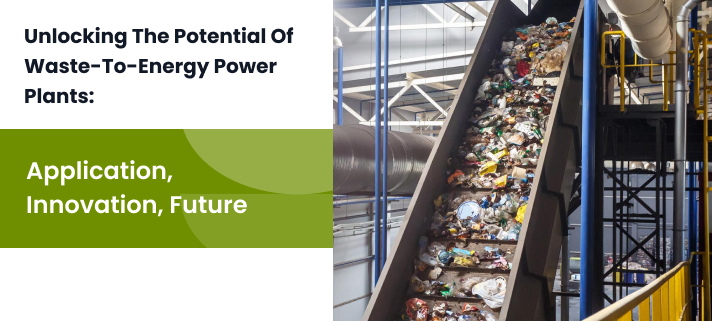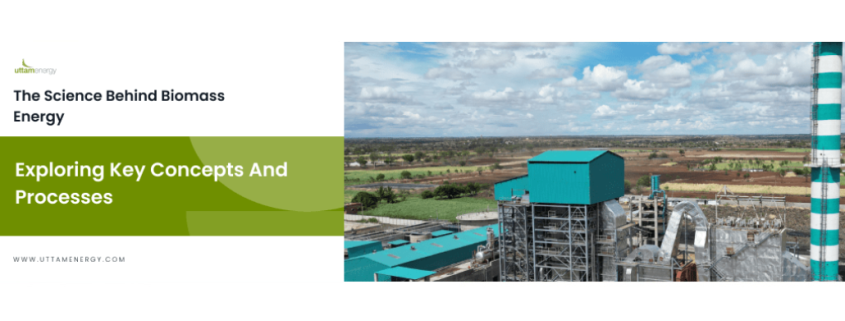Unlocking The Potential Of Waste-To-Energy Power Plants: Application, Innovation, Future
Annually, over two billion tonnes of municipal solid waste is generated worldwide. Countries across the world are grappling with increasing waste generation. There is an urgent need for sustainable energy solutions. One effective solution is waste-to-energy power plants.
Waste-to-energy power plants are a method of managing waste while simultaneously generating renewable energy. It is a transformative approach to managing waste and a viable alternative that addresses many challenges.
This blog explores waste-to-energy power plants’ applications, innovations, and prospects and how Uttamenergy contributes to this industry.
Key highlights:
- Understanding waste-to-energy
- Waste-to-energy statistics
- Applications of waste-to-energy power plants
- Innovations in waste-to-energy technology
- Prospects of waste-to-energy power plants
- Uttamenergy’s waste-to-energy solutions
Understanding waste-to-energy
Waste-to-energy is a process that converts non-recyclable waste materials, such as municipal, biomedical, and agricultural waste, into usable energy in the form of electricity or heat.
This method not only reduces the volume of waste sent to landfills but also harnesses the energy content of waste materials, providing a sustainable alternative to fossil fuels. Its primary technologies include incineration, anaerobic digestion, and gasification.
1. Incineration: This method of producing energy from waste is the most common technology. In this method, waste is burned at high temperatures to generate steam that drives turbines for electricity generation. Modern incineration plants are equipped with advanced flue gas treatment systems to minimise emissions and ensure compliance with environmental regulations.
2. Anaerobic digestion: This biological process breaks down organic waste in the absence of oxygen, producing biogas that can be used for heating or electricity generation. It is particularly effective for agricultural and food waste.
3. Gasification: In the gasification process, organic materials are converted into syngas through high-temperature reactions with limited oxygen. The syngas can then be used to produce electricity or as a chemical feedstock.
Waste-to-energy statistics
- The global waste-to-energy market is projected to grow from USD 46.4 billion in 2024 to USD 72.4 billion by 2033, representing a compound annual growth rate (CAGR) of 5.1% from 2025 to 2033.
- As of early 2024, there are over 2,800 waste-to-energy plants worldwide, with a total disposal capacity of approximately 576 million tons per year. This number is expected to increase as more facilities are developed.
- By 2050, municipal waste generation is projected to reach 3.4 billion tons, driven by economic development and urbanisation, highlighting the growing need for waste-to-energy solutions.
- Currently, Europe leads the waste-to-energy market, attributed to stringent waste management regulations, limited landfill availability, and high energy costs, which drive investments in sustainable waste management alternatives.
- Across Southeast Asia, there are more than 100 waste-to-energy projects, particularly in the Philippines, Indonesia, and Thailand.
- Vietnam plans to establish facilities capable of processing up to 9,300 TPD of waste, reflecting the need for effective waste management solutions.
Applications of waste-to-energy power plants
Waste-to-energy power plants are utilised across industries that require energy generation, waste management, and resource recovery. This section explores the various applications of waste-to-energy power plants.
1. Municipal Solid Waste Management: Waste-to-energy plants help reduce the volume of municipal solid waste that would otherwise end up in landfills. These facilities contribute to cleaner urban environments by converting waste into energy and reducing landfill space requirements.
2. Renewable energy production: Waste-to-energy plants generate renewable energy that can power homes and industries, contributing to local energy grids and reducing reliance on fossil fuels. The energy produced is considered renewable because it utilises the inherent energy content of waste materials.
3. Resource recovery: Beyond energy production, waste-to-energy plants also help recover valuable materials from waste streams, such as metals and plastics, which can be recycled and reused. This aligns with circular economy principles by promoting resource efficiency.
Innovations in waste-to-energy technology
The field of waste-to-energy is characterised by continuous innovation aimed at improving efficiency, reducing emissions, and enhancing overall sustainability. This section explores the different technologies involved in waste-to-energy power plants.
- Advanced combustion technologies: Innovations in combustion technologies, such as moving grates and fluidised bed systems, optimise incineration by improving combustion efficiency and minimising harmful emissions.
- Flue gas treatment systems: Modern waste-to-energy plants utilise sophisticated flue gas cleaning technologies, including electrostatic precipitators and scrubbers, to capture pollutants before they are released into the atmosphere. These systems ensure compliance with stringent environmental standards while maximising energy recovery.
- Integration with renewable energy sources: Some waste-to-energy facilities are now designed to integrate with other renewable energy sources, such as solar or wind power. This hybrid approach enhances overall energy resilience and supports grid stability.
- Carbon capture technologies: Emerging technologies aim to capture carbon dioxide emissions from waste-to-energy processes, mitigating climate change impacts. These innovations are still in developmental stages but hold promise for future applications.
Prospects of waste-to-energy power plants
The future of waste-to-energy power plants appears promising as global awareness of environmental issues increases and the demand for sustainable solutions grows.
- Policy support and investment: Governments worldwide recognise the importance of waste-to-energy technologies in achieving climate goals and managing waste sustainably. Increased policy support and investment can accelerate the development of new projects and technologies in this sector.
- Public acceptance: As communities become more aware of the benefits of technologies, such as reduced landfill use and clean energy production, public acceptance is expected to grow. Engaging communities through education about the environmental benefits will be crucial for future projects.
- Technological advancements: Continuous research and development will lead to more efficient processes and lower emissions in waste-to-energy facilities. Innovations in material recovery technologies will also enhance resource recovery rates from waste streams.
- Global expansion: The potential for waste-to-energy technology extends beyond developed nations; emerging economies can simultaneously leverage these systems to address waste management challenges and energy deficits. Countries like India are already exploring large-scale waste-to-energy projects as part of their sustainable development strategies.
Uttamenergy waste-to-energy solutions
Uttamenergy offers a wide range of waste-to-energy solutions. One current project is a turnkey project at Deonar Dumping Grounds in Mumbai. The project includes a 360-tonne-per-day capacity waste-to-energy plant with a power generation capacity of 6 MW. The project will help reduce the environmental impact of waste disposal in Mumbai. Over 90% of the project’s components will be manufactured in India in line with the Make in India initiative.
Conclusion
Waste-to-energy power plants are key in addressing two pressing global challenges: waste management and sustainable energy production. By transforming non-recyclable waste into valuable resources, these facilities contribute to cleaner environments and play an essential role in achieving renewable energy targets.
As innovations continue to emerge within this sector, coupled with supportive policies and increased public awareness, the potential for waste-to-energy technologies will only grow. Embracing these solutions is vital for creating a sustainable future where waste is viewed not merely as refuse but as a resource capable of powering our communities.
If you are looking for waste-to-energy solutions for your facility, reach out to us.s.


